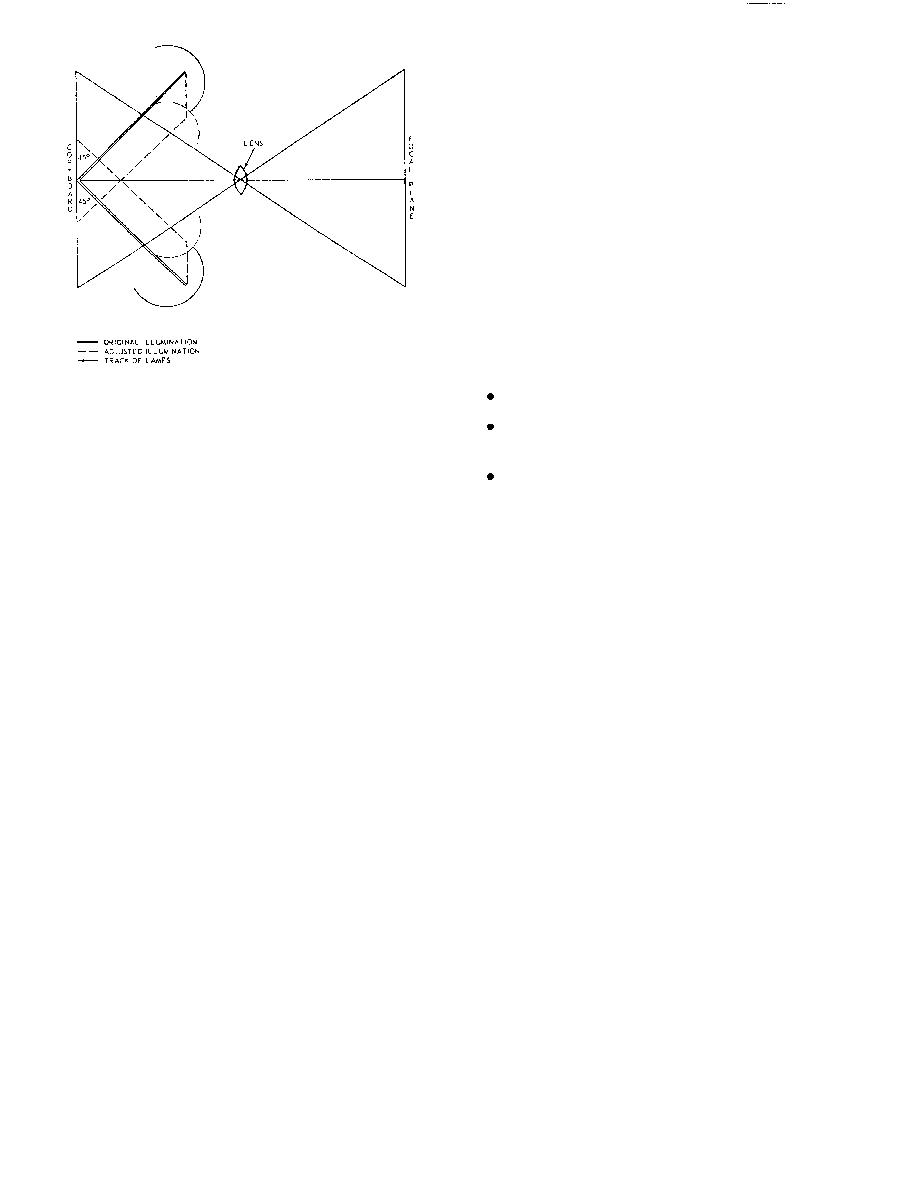
DOFMaster
for Windows
On-line
Depth of Field
Calculator
DOFMaster for Mobile Devices
On-line
Depth of Field
Table
Hyperfocal
Distance Chart
Articles
FAQ
Recommended
Books
Support
Contact
Links
Home
for Windows
On-line
Depth of Field
Calculator
DOFMaster for Mobile Devices
On-line
Depth of Field
Table
Hyperfocal
Distance Chart
Articles
FAQ
Recommended
Books
Support
Contact
Links
Home
As an Amazon Associate I earn from qualifying purchases.
![]()
color balance of the color film being used. When a light
source produces an illumination color other than that for
which a color film is balanced, filters must be used to
alter the Kelvin temperature of the illumination to
correspond with the color balance of the film.
copyboard, and aimed at the center of the original.
However, there are occasions when you may have to
copy a large chart, and the normal lighting setup causes
uneven illumination. Light from an artificial source
must travel farther to reach the center of the original, and
the light reflected from the edges must travel farther to
reach the lens. This causes the light to be less intense
along the edges and may result in underexposure of
these areas. You can correct this condition by adjusting
the lights. Keep the lights at a 45-degree angle, but move
them closer to the lens optical axis until the light beams
from the lamps intersect in front of the original (fig. 8-4).
Balance is generally achieved when the beams cross
each other at a point approximately one third of the
distance from the copyboard to the lens. Check the
to see whether it is even from the center to the outer
edges.
wide coverage and diffused light, produced from this
light source, allows you to light the original easily and
evenly. To check the evenness of the lighting, use a flash
meter and take readings from the center, corners, and
intermediate points on the original.
eliminate most normal reflections. The three types of
unwanted reflections in copy work are as follows:
or copyboard
release, or other shiny objects around the copy setup.
The reflections usually occur when you are copying
glass-covered originals, glossy photographs, or other
smooth-surfaced originals. The best way to eliminate
this type of reflection (when changing the position of the
lights does not help) is to use a black cloth or a sheet of
cardboard (painted dull black) as a shield between the
lens and copyboard. You can do this by cutting a hole
the size of the lens in the center of the cloth or board
then placing the cloth or board over or around the lens.
A lens hood also helps in reducing or eliminating this
type of reflection.
paintings with brush marks, canvas texture, cracks, and
so forth. These reflections are caused by high spots on
the surface of the original and cause small light
reflections of the light source. Such small reflections
cover the surface of the original with a haze of light that
results in a low-contrast copy image. Reflections of this
type are more difficult to avoid than reflections of the
light source. As long as the lights shine directly on the
rough surface, such reflections occur no matter in what
position the lights are placed. There are two lighting
methods by which this type of reflection can be
minimized or eliminated. These methods are bounce
lighting and polarized lighting.
Basic Photography Course

As an Amazon Associate I earn from qualifying purchases.
WWW.DOFMASTER.COM
© 2006 Don Fleming. All rights reserved.
© 2006 Don Fleming. All rights reserved.